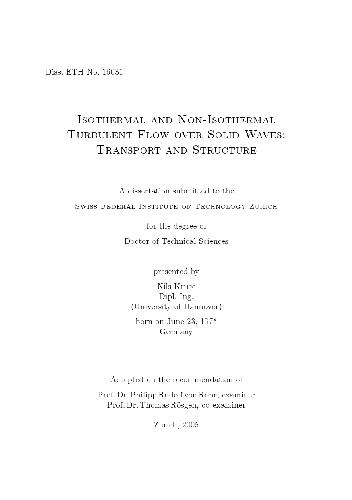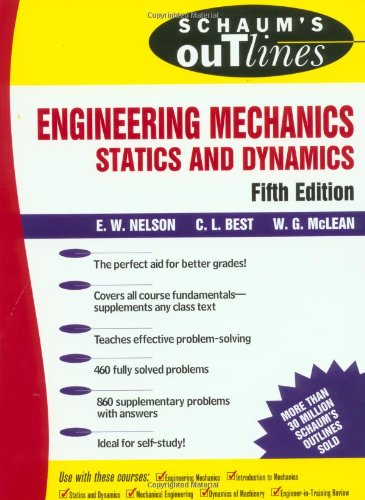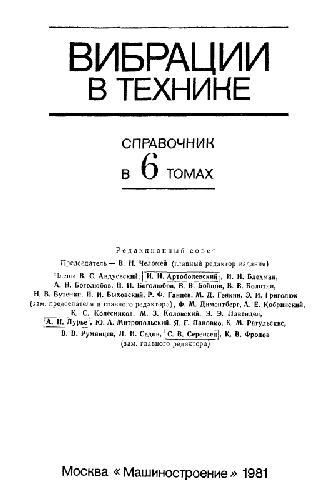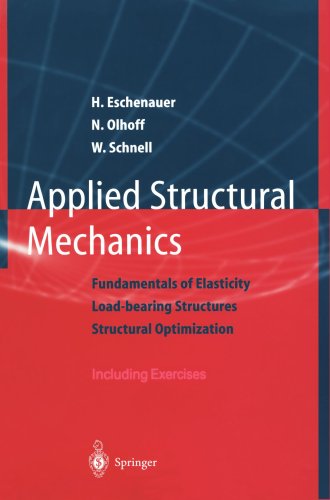Kruse N.
Table of contents :
Abstract……Page 5
Zusammenfassung……Page 7
List of Figures……Page 9
List of Tables……Page 13
Nomenclature……Page 25
1 Introduction……Page 33
2.1 Transport and Structure in Wall Turbulence……Page 39
2.1.1 Wall Flows……Page 40
2.1.2 Turbulent Flow over Wavy Surfaces with Separation……Page 41
2.1.3 Large-Scale Longitudinal Flow Structures……Page 43
2.1.4 Governing Turbulent Transport Equations……Page 46
2.2.1 Mathematical Background……Page 48
2.2.2 The Method of Snapshots……Page 50
3 Experimental Aspects……Page 53
3.1 Channel Facility……Page 54
3.1.1 Non-Heated Test Section……Page 56
3.1.2 Heated Test Section……Page 57
3.2.1 Digital Particle Image Velocimetry……Page 60
3.2.2 Tracer Particles……Page 66
3.3.1 Combined Particle Image Velocimetry/Liquid Crystal Thermometry Technique……Page 72
3.3.2 Thermochromic Liquid Crystal Particles……Page 78
3.4 Measurement Accuracy……Page 89
3.4.1 Spatial Resolution……Page 92
I Results on Isothermal Flow over Waves……Page 95
4 Dynamics of Large-Scale Structures……Page 97
4.1 Instantaneous Velocity Fields……Page 98
4.2 Proper Orthogonal Decomposition Analysis……Page 100
4.3 Temporal Evolution……Page 103
4.4 Spanwise Growth……Page 108
4.5 Summary……Page 110
5 Influence of Amplitude-to-Wavelength Ratio on Turbulence……Page 111
5.1 Introduction……Page 112
5.2 Surface Roughness……Page 115
5.3 Structural Information from Streamlines of the Velocity Field……Page 118
5.4 Statistical Quantities……Page 119
5.5.1 Results in the (y,z)-Plane……Page 130
5.5.2 Results in the (x,y)-Plane……Page 135
5.5.3 Results in the (x,z)-Plane……Page 139
5.6 Summary……Page 143
6 Reynolds Number Considerations……Page 145
6.1 Introduction……Page 146
6.2 Structural Information from Streamlines of the Velocity Field……Page 147
6.3 Statistical Quantities……Page 152
6.4.1 Results in the (y,z)-Plane……Page 157
6.4.2 Results in the (x,y)-Plane……Page 160
6.4.3 Results in the (x,z)-Plane……Page 163
6.4.4 Energetic, Large-Scale Motion……Page 166
6.5 Summary……Page 168
II Results on Non-Isothermal Flow over Waves……Page 171
7 Structure of Turbulent Heat Flux……Page 173
7.1.1 Previous Research……Page 174
7.1.2 Objectives……Page 175
7.1.3 Flow Situation……Page 176
7.2.2 Structural Information from POD Analysis……Page 180
7.3.1 Instantaneous Velocity and Temperature Fields……Page 185
7.3.2 Structural Information from POD Analysis……Page 192
7.3.3 Summary……Page 197
8 Concluding Remarks……Page 201
9.1 Effect of a Moving Wavy Wall on Turbulent Transport……Page 205
9.2 Measurements in Complex Geometries……Page 207
Bibliography……Page 211
Curriculum Vitae……Page 223







Reviews
There are no reviews yet.